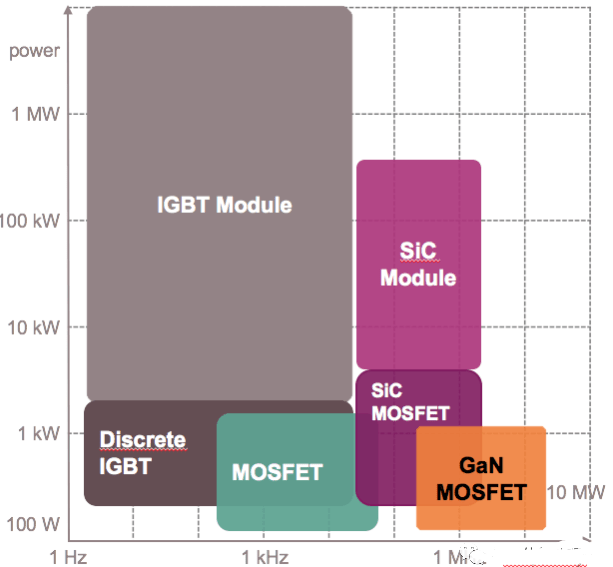Please submit your message online, we will contact you as soon as possible!

Author:KANA
In terms of technology, in addition to the pursuit of the process, another technical route is the development of characteristic processes.
Characteristic processes focus on the realization of special functions and are considered to be an important branch of development beyond "Moore's Law" (" Moore's Law "is to improve the integration of chips by continuously shrinking the process linewidth). There are a wide range of characteristic craft products, and they can form characteristic clusters with their own market positioning and development trends. For example, power management, high-voltage drives, micro-control units, radio frequency, image sensing and other subdivisions.
Power semiconductors are also representative of characteristic processes. Unlike processor chips, power semiconductors do not pursue extreme line width in terms of process, nor do they follow "Moore's Law", but focus on structural and technical improvements and material iteration.
Power semiconductors are used in power electronics. For solid-state devices, power electronics control and convert electricity in a variety of systems, such as automobiles, motor drives, power supplies, solar energy, and wind turbines. These devices differ from conventional metal-oxide-semiconductor field-effect transistors (MOSFETs). Today's digital CMOS FETs consist of a source, gate, and drain built on top of silicon. In operation, a voltage is applied to the grid so that current flows from the source to the drain.
For special process products, if you do some customized design in the manufacturing process, the performance of the product will be very different.

The current power semiconductor market accounts for between 8% and 10% of the global semiconductor industry. Power semiconductors are essential for power electronic devices, and the industry has weak cyclical fluctuations. In recent years, the application field of power semiconductors has expanded from industrial control and consumer electronics to many markets such as new energy, rail transit, smart grid, inverter home appliances, and so on, and the industry market size has shown a steady growth trend.
In contrast, IGBTs and most power MOSFETs are vertical devices, with the source and gate at the top of the device and the drain at the bottom. In operation, a voltage is applied to the gate and the electrons move in a vertical direction, which supports higher currents and voltages.
There are other differences. In traditional MOSFETs, chip manufacturers shrink the transistor's feature size with each generation, resulting in a chip with a higher transistor density. In power devices, vendors are also shrinking transistors, but not to the extent of digital CMOS.
"If you think about MOSFETs and IGBTs, they are going through their own trajectory in terms of scale and efficiency," said Michelle Bourke, senior director of strategic marketing at Lam Research. "Some might say these features are large compared to CMOS. However, achieving the verticality and profile control required for this device's performance was as challenging as some of the CMOS issues we encountered in Lam. So while those capabilities are still big from a device perspective, from a development perspective it was one of the most challenging processes we completed. We are making that happen."
In general, for power semiconductors, the most important factors to consider are other parameters such as voltage (V), Rds (on), and gate charge. Each power semiconductor device has a voltage rating (V). "The 'V' in VDSS is the maximum allowable operating voltage, or drain-source voltage specification," explained EPC CEO Alex Lidow.
The on-resistance or Rds (on) is the value of the resistance between the source and drain. The gate charge is the amount of charge that opens the device. Ron x A is important. "Cost optimization in the semiconductor business has always been associated with chip downsizing. This rule also applies to power devices. Ron x A is a key quality factor that describes the silicon area required to provide the specific device performance of a power device. Often, when we develop new power technologies, the cost advantages we gain by reducing the Ron XA of the new technology outweigh the additional costs of the typically more complex production process. These cost benefits can be delivered to customers and are at the heart of the cost reduction roadmap, "said Infineon's Yee.
A variety of power semiconductor options are available to suit different applications. On the silicon side, options include power MOSFETs, overjunction power MOSFETs, and IGBTs. Power MOSFETs are considered the cheapest and most popular devices for adapters, power supplies, and other products. They are used for 25 to 500 volt applications.
Overjunction power MOSFETs are enhanced MOSFETs for use in 500 to 900 volt systems. At the same time, the leading mid-power semiconductor devices are IGBTs for 1,200 V to 6.6 kV applications.
Silicon-based power devices compete with GaN and SiC in various fields. Both GaN and SiC have some impressive properties. SiC provides 10 times the breakdown field strength and 3 times the silicon band gap. GaN surpassed those numbers.
"Wide-band gap semiconductors have key advantages, but they will exist in parallel with silicon-based technologies," said David Haynes, managing director of strategic marketing at Lam Research. "Silicon-based technology will last a long time. They are very mature. There is a lot of research and technology development going on with silicon-based power devices."
Disclaimer | Some of the material is from the Economic Observer. It is reproduced as an industry exchange and does not represent the views of the company. The copyright is reserved by the original author. In case of infringement, please contact us. In addition, if you reprint this article, please indicate the source.
If you are interested in this article, please immediatelycontact us

Support Hotline
Please submit your message online, we will contact you as soon as possible!